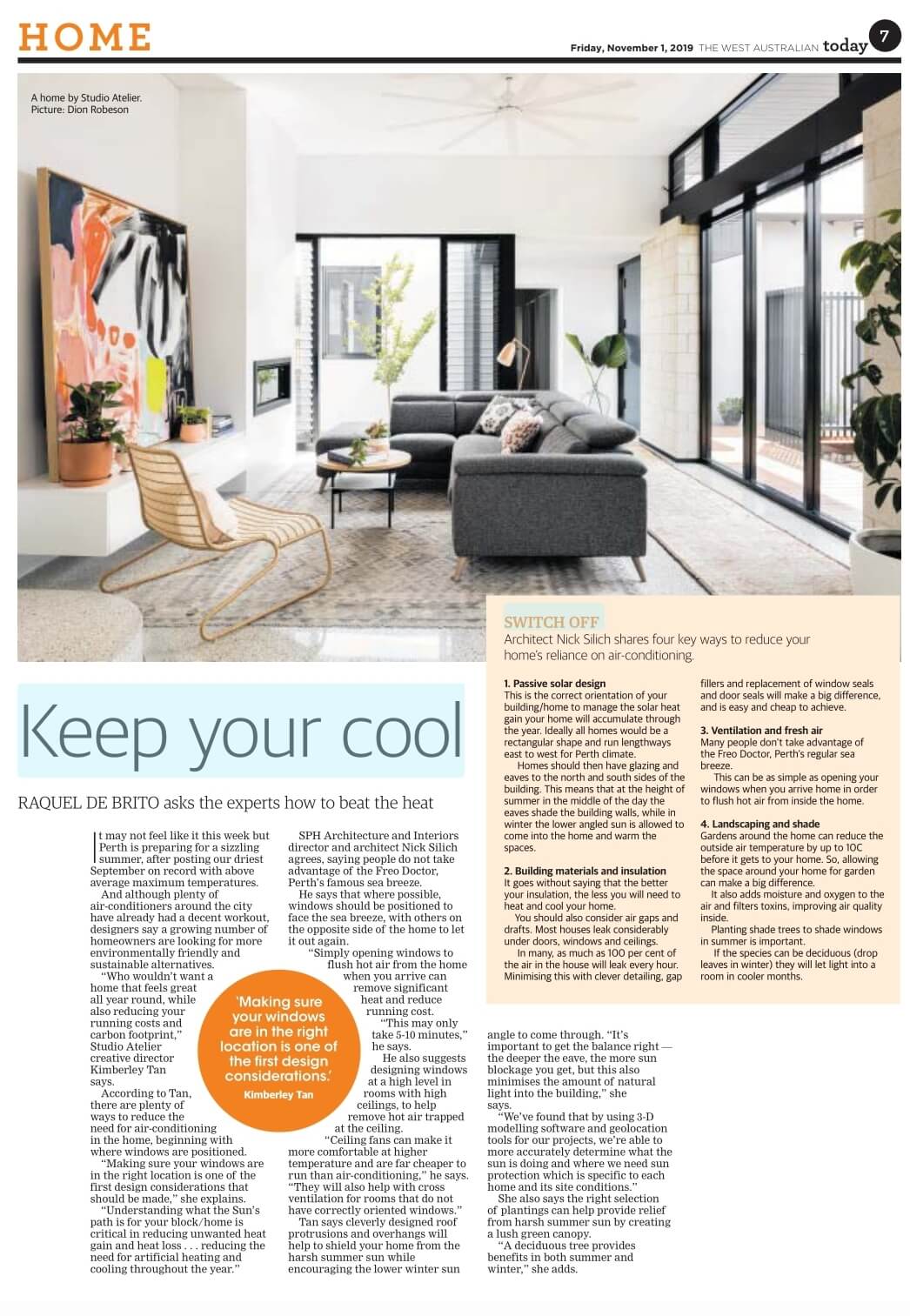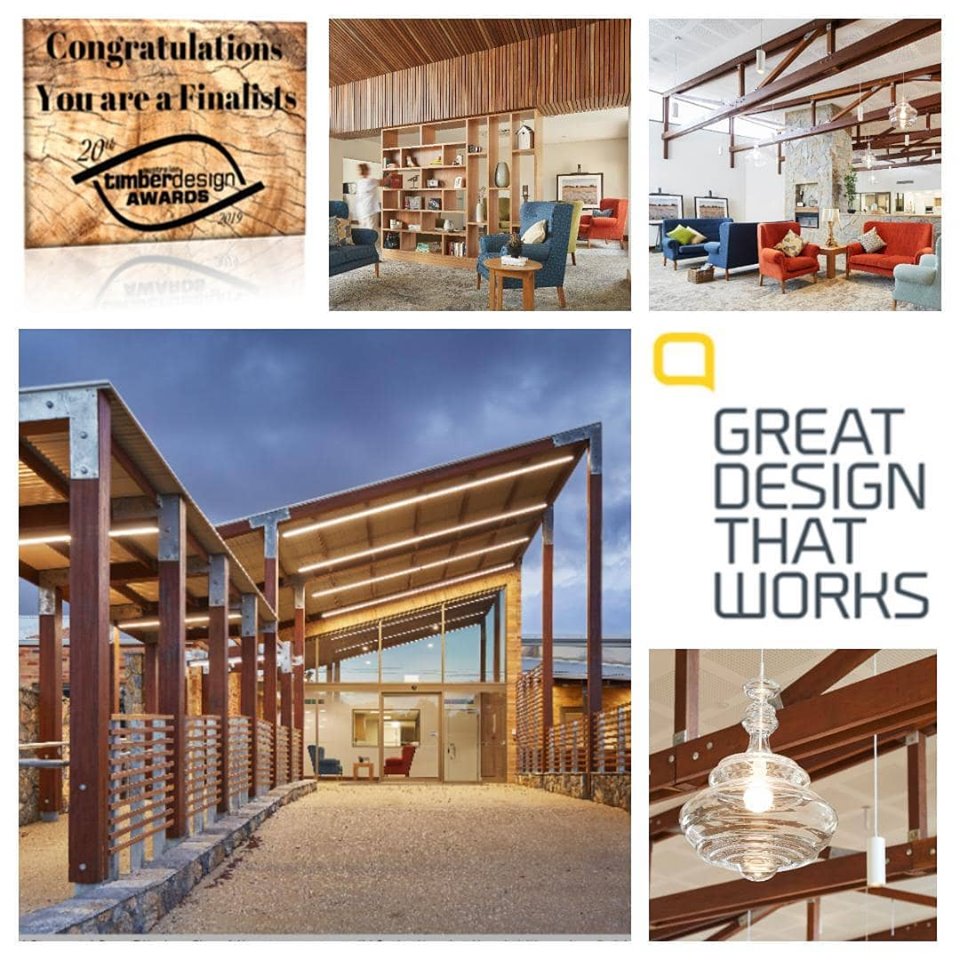Things of Stone + Wood - Design for Wellbeing

Set in Narrogin, a small country town in regional Western Australia, is a unique, fit-for-purpose residence for 14 people living with dementia. Creating an environment that was enabling for these residents was embedded in the project design brief from the outset. SPH architecture + interior was commissioned to design the architecture and interior.
This article originally appeared in Australian Aging Agenda Nov-Dec 2018.
SPH knew that the residents would be coming from farming properties in the Wheatbelt region and developed a design concept based on rural landscapes and agricultural buildings. Shearing sheds and farmhouses were sources of inspiration. The intent was to create an environment with elements that were familiar to the residents, allowing them to reminisce about their working lives.
The layout was driven by firstly defining the best areas for gardens and then positioning the building. All resident spaces have views of nature and common areas have free access into the gardens. The planning of the building was informed by line-of-sight way finding, which is simply based on the principle of “I want to see where I am going”. As you move through the building the architects consciously minimized the number of decision points to reduce confusion and overwhelm often faced by residents. The design process involved the use of several environmental audit tools and the architects undertook extensive consultation with care givers to ensure an evidence-based, best practice outcome.SPH believe that great design can maximise the wellbeing of people living with dementia. There is a growing body of evidence proving that the physical design of a care environment can be disabling or enabling for building users. There are many design principles and audit tools available to guide architects in creating enabling environments.
Narrogin Cottage Homes is one example of how these translate into reality. Narrogin has a population of 4200 and sits in a valley surrounded by low lying hills with a stream following through the middle and a railway line. The surrounding agricultural landscape is characterised by long horizons, miles of fencing, farm houses and sheds, machinery, sandy gravel, sheet ironstone and marri trees.This context combined with a care philosophy founded on relationships-based care and a visionary CEO, Julie Christensen, were the beginnings of this award-winning project.“ We had a dream and all of us today are sitting inside that dream, this is a building that will provide services for our southern Wheatbelt communities that every single person sitting in this room should be incredibly proud of”. Julie Christensen, CEO Narrogin Cottage HomesThe architects created a design that embodied the natural surroundings, the model of care and the client’s vision.
This included a material palette that used stone and wood to reference the agriculture buildings and local context. The design incorporates natural stone, exposed timber trusses and face brick – all materials very familiar to Western Australians particularly the history of brick manufacturing in the state of WA. Face brick is also a very human scale material and easily understood, its relatable and the architects knew it would be familiar to the residents.Other key aspects that guided the architect’s design were:
- Design to maximise gardens, the planning was driven by firstly defining the best areas for gardens and then positioning the building;
- Design to provide views of nature, the layout ensures that every resident space inside the building has a view of nature;
- Discrete security and meaningful movement, the model of care did not support a locked environment, so the building was not be a barrier to residents going outside, the garden edge was the secure boundary.
- Minimising decision points, the planning is simple to support line-of-sight wayfinding with minimal junctions;
- Creating a variety of spaces, active and passive gardens, spaces to be alone or with others;
- Design to highlight helpful features where possible, the dementia friendly wardrobe was adopted from the Dementia Enabling Environment Project https://www.enablingenvironments.com.au/ published by Alzheimer’s Australia WA;
- Careful consideration of corridors, changes in materiality including the use of timber wall panelling, built-in seating niches, memory boxes and carpet tiles to soften and de-institutionalise the environment.
The architects cite the stone hearth as a really important element of the design. This feature forms a focal point for families to gather and share memories and provides warmth and sensory stimulation.Ultimately the success of the design was having a concept that was relevant to the occupants, being that rustic, rural feel achieved through a contemporary Australian architectural style. SPH managed to avoid a novel, or juvenile, outcome often seen in specialist dementia care units as evidenced in primary colours and quirky motifs. They set out to create something meaningful to the residents, their families and the staff, and have achieved this through a timeless, elegant and respectful design. A design that is enabling and supports wellbeing.About the Author: Ali Devellerez is an architect, specialist health planner and director at SPH architecture + interior.
Photography - Acorn Photography
For the original article as seen in Australian Aging Agenda please see: AAA November-December 2018Spreads 15 (002)






